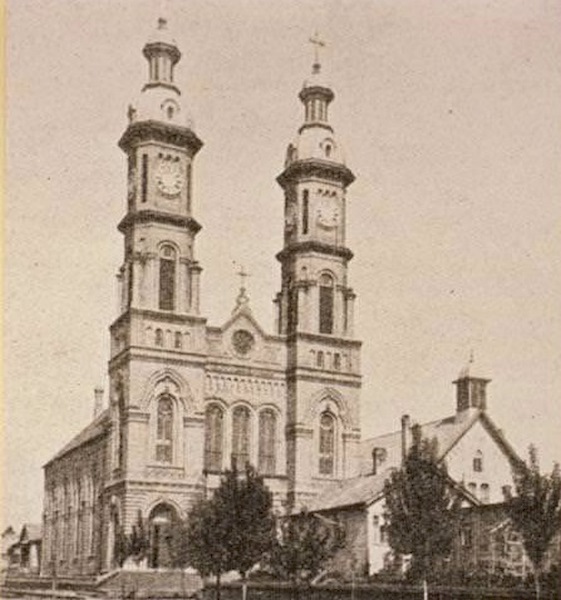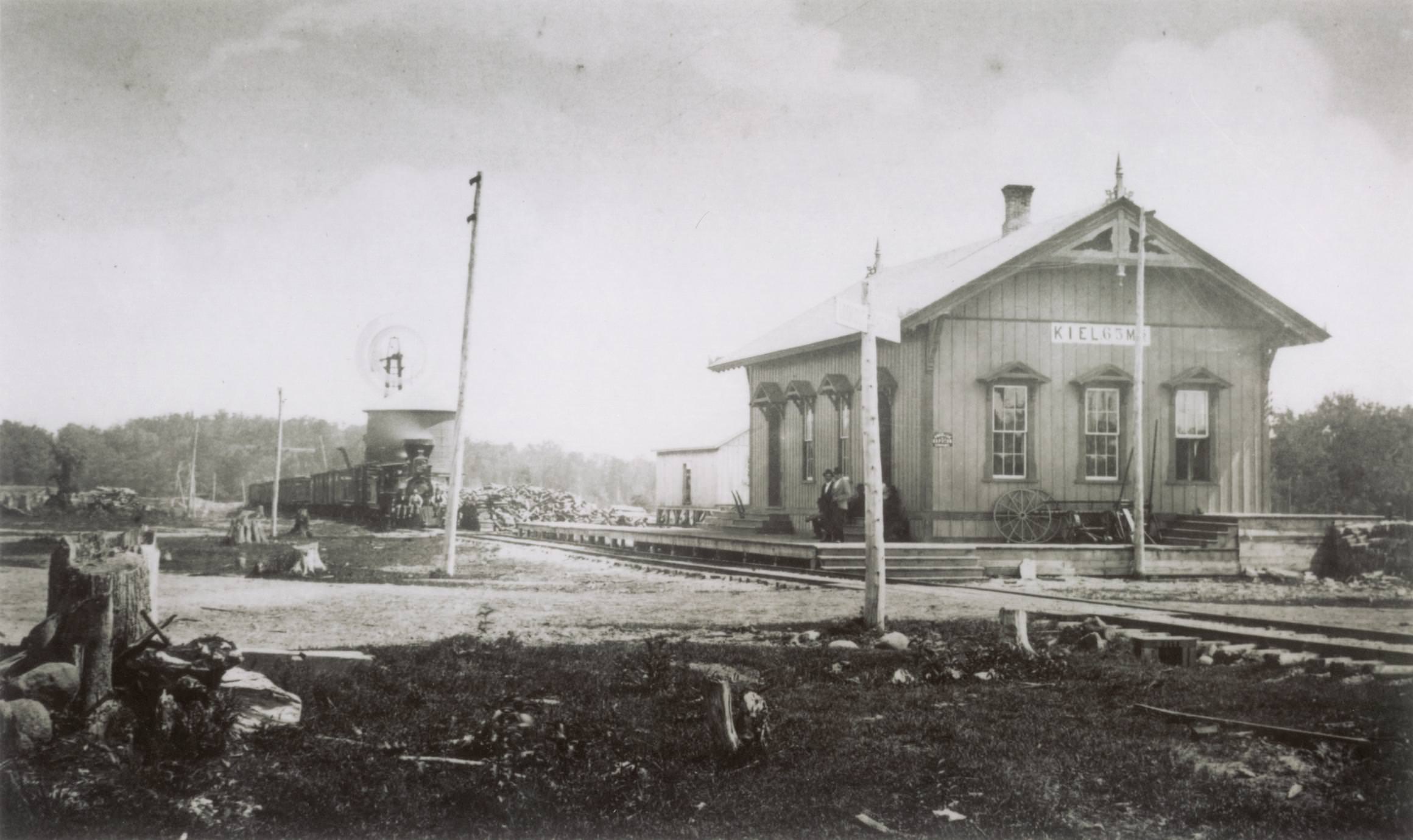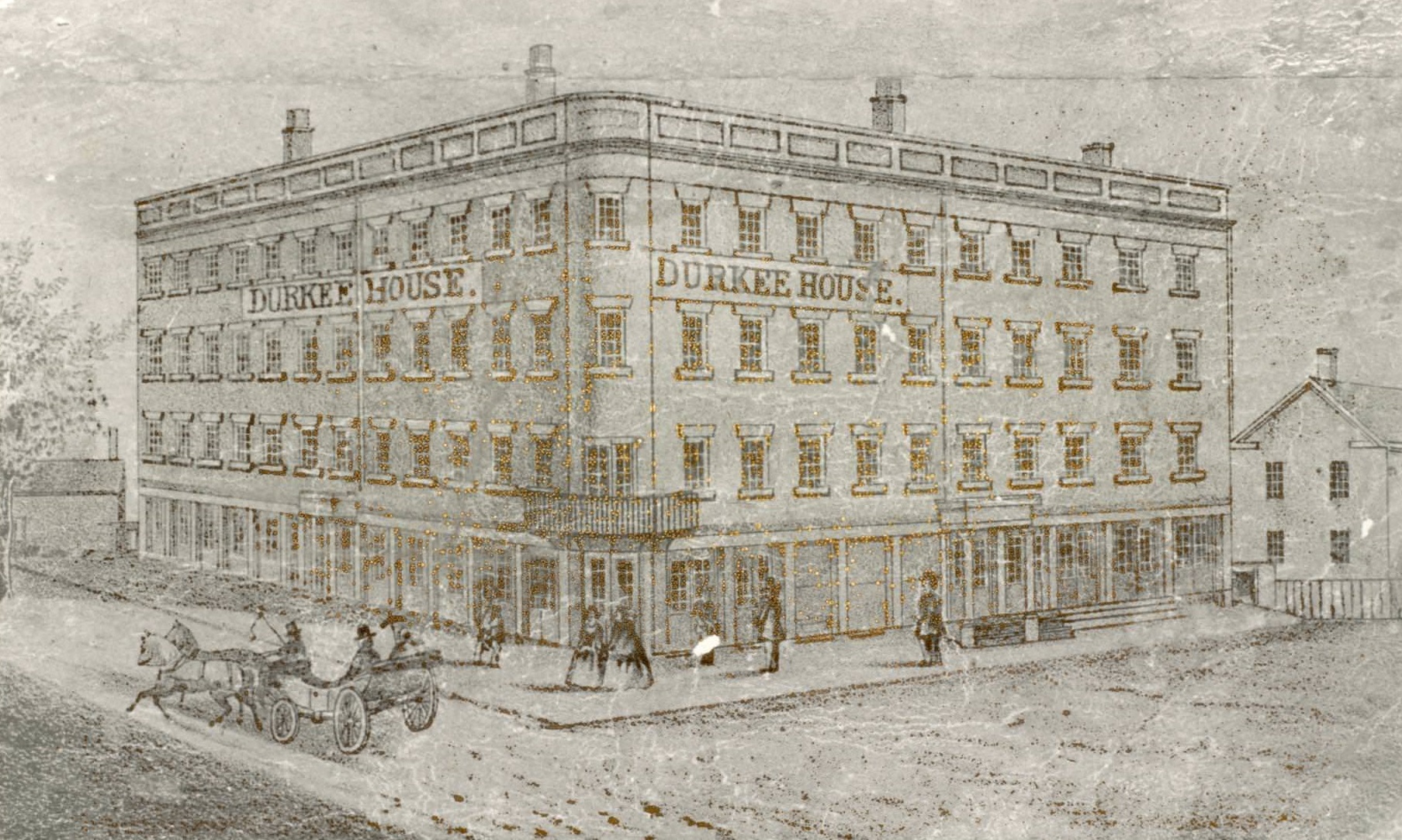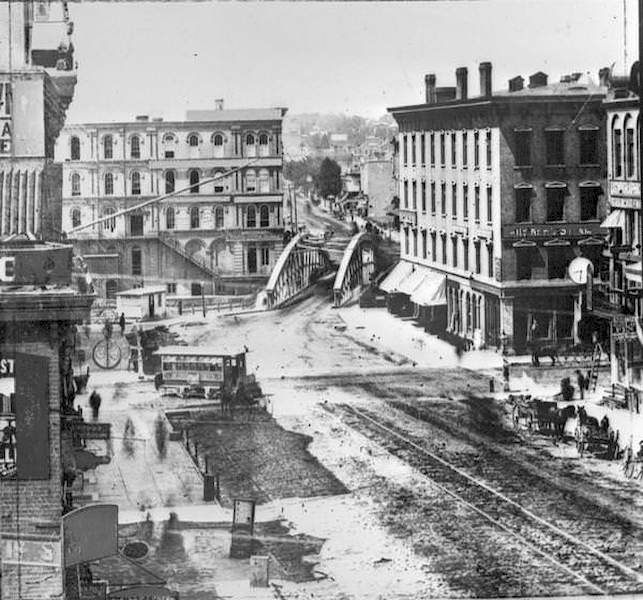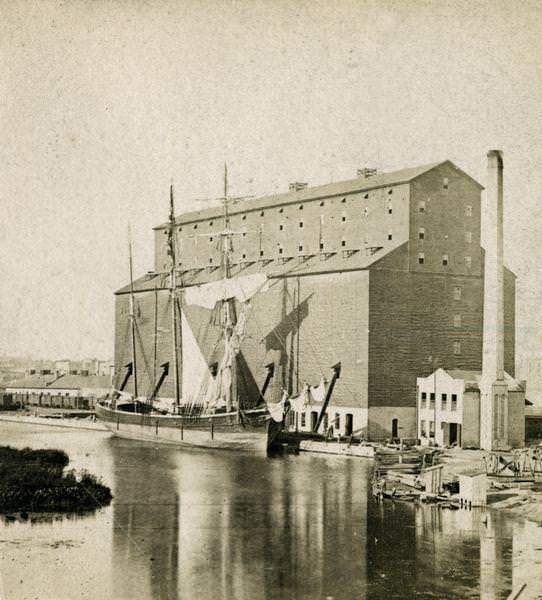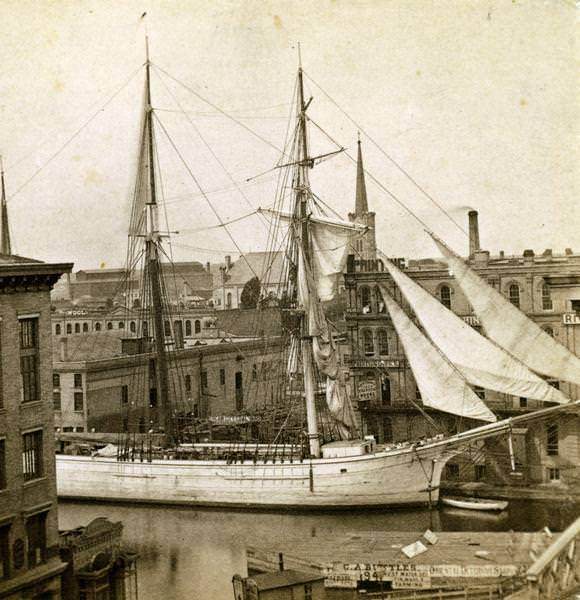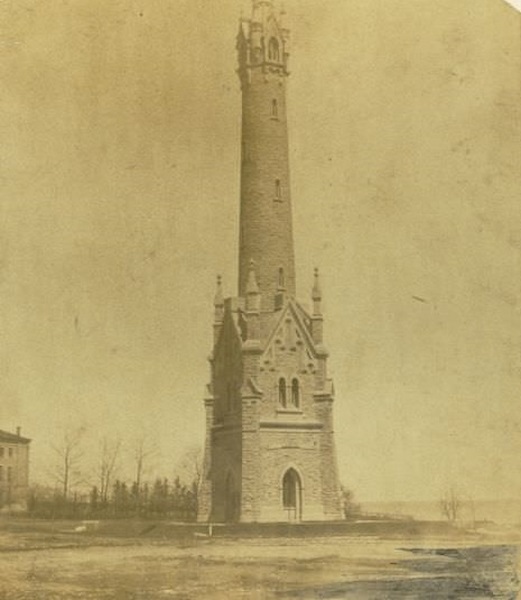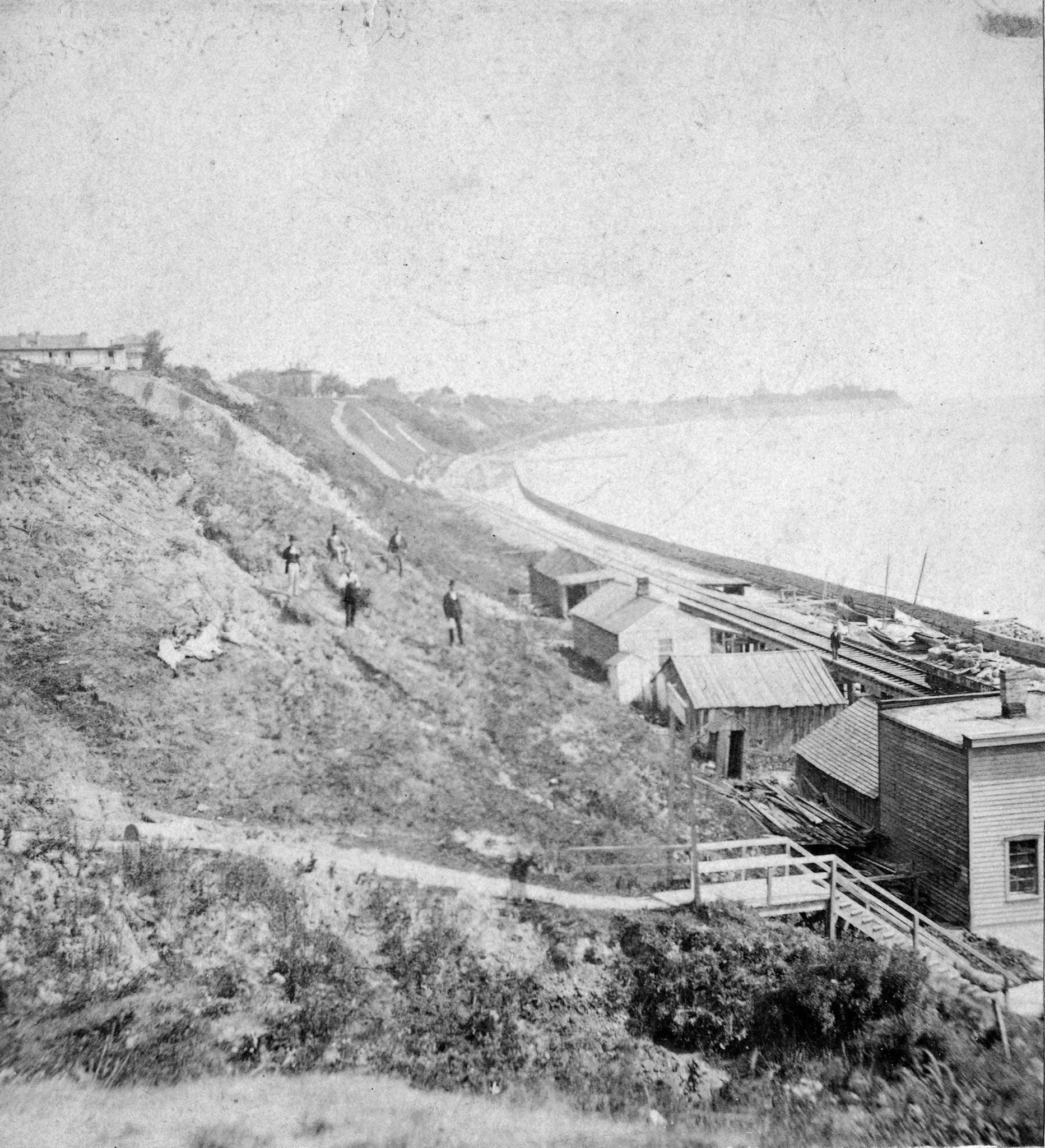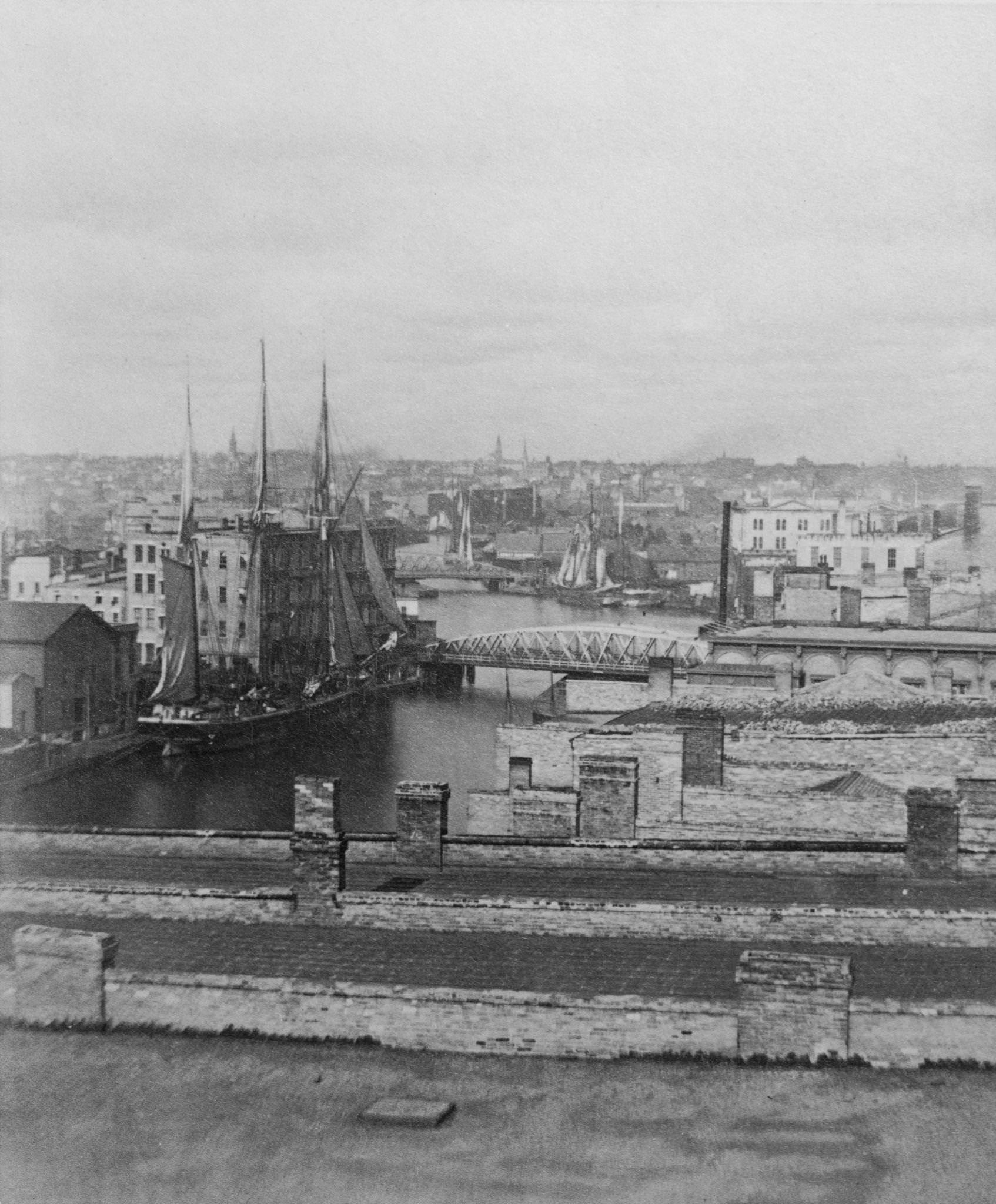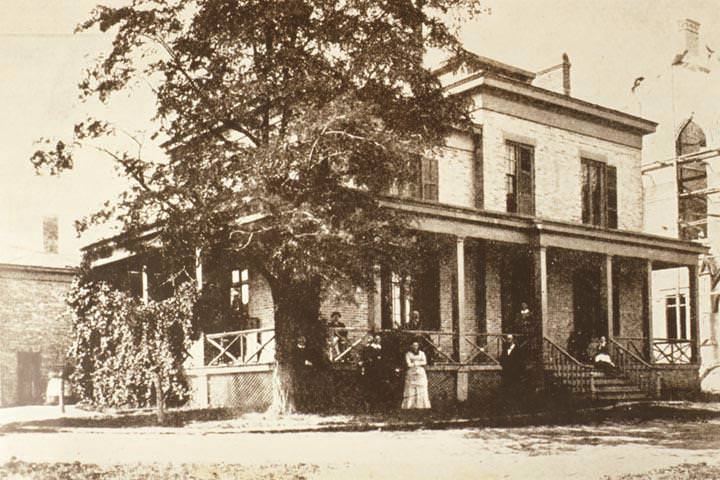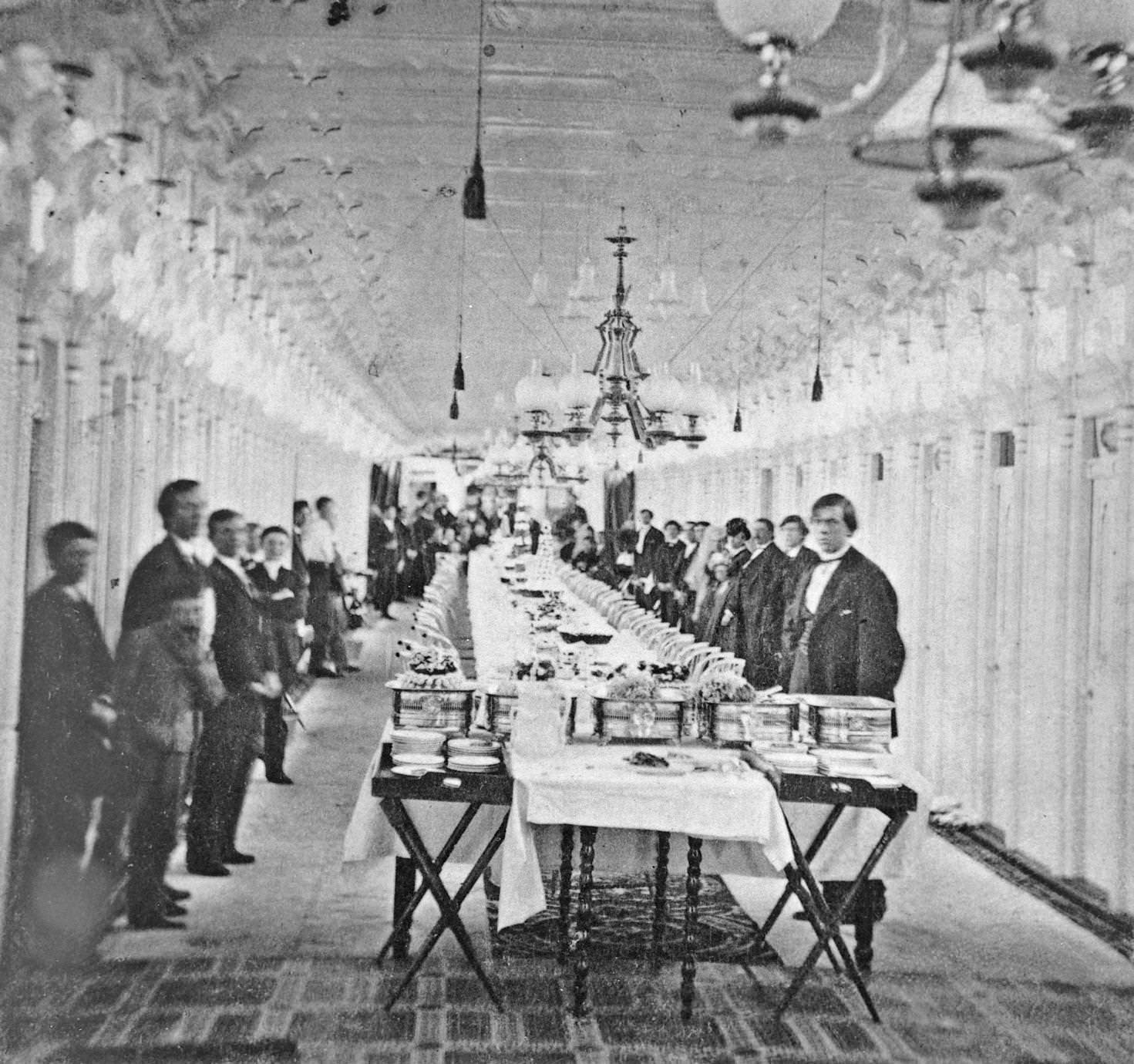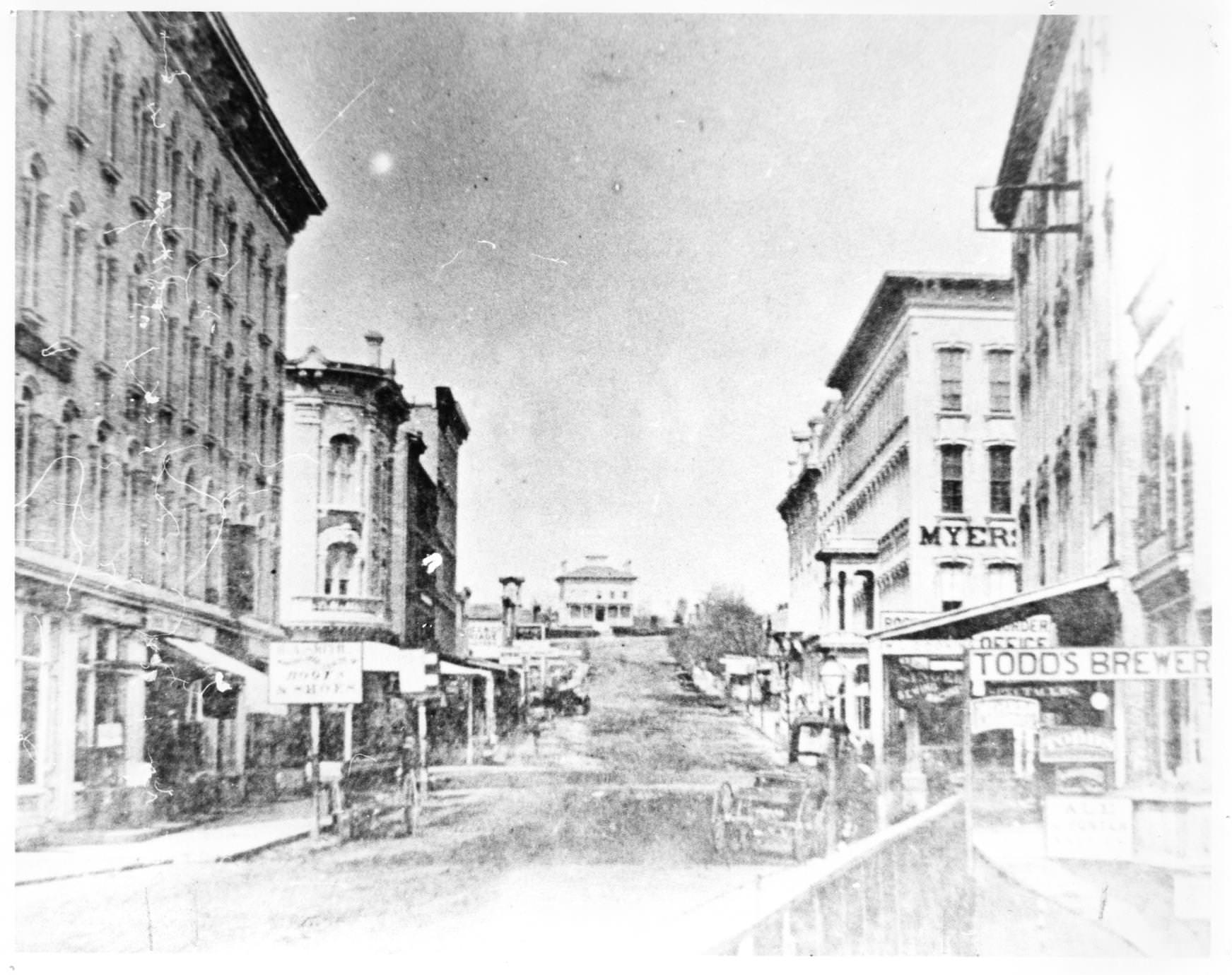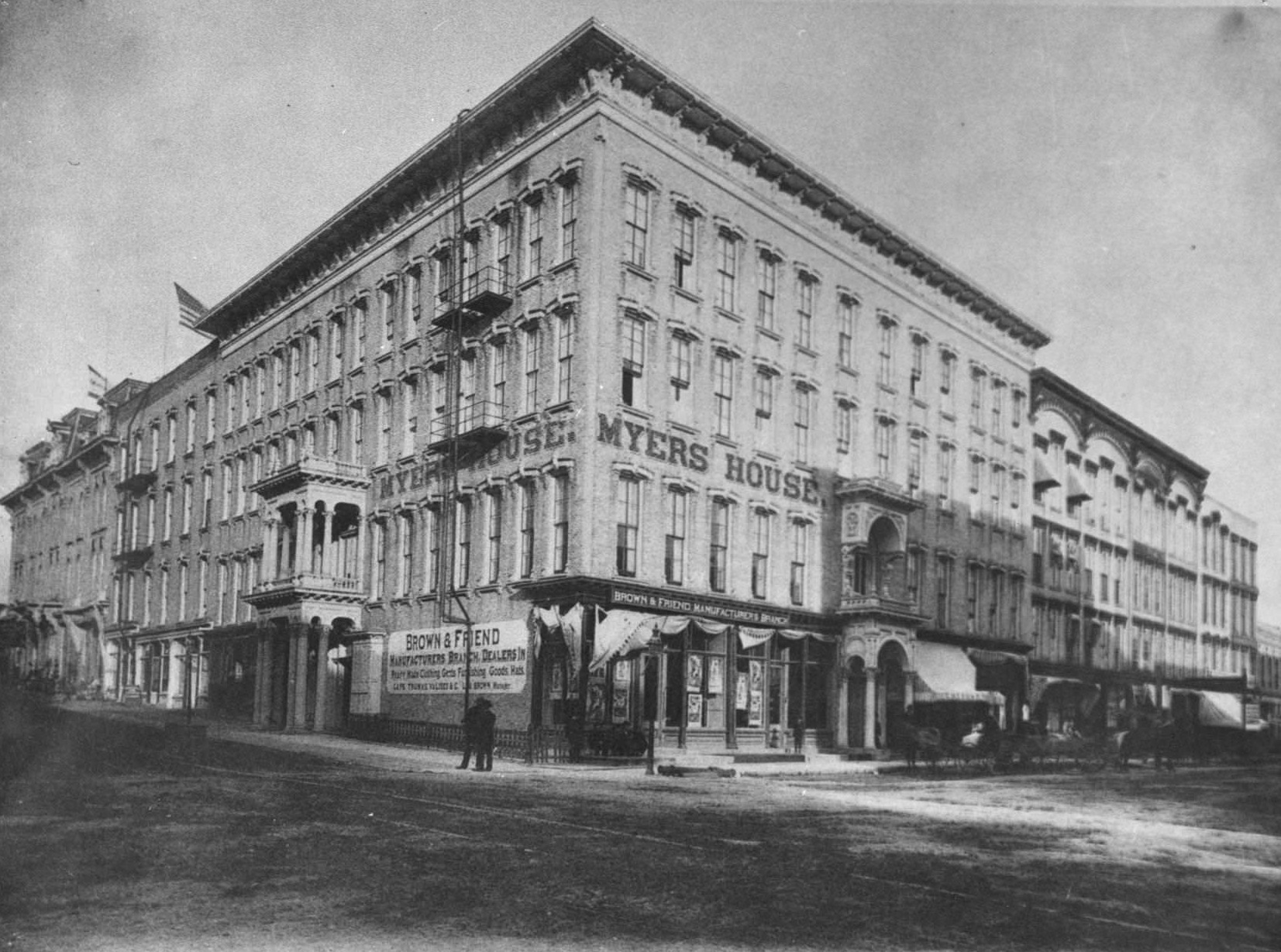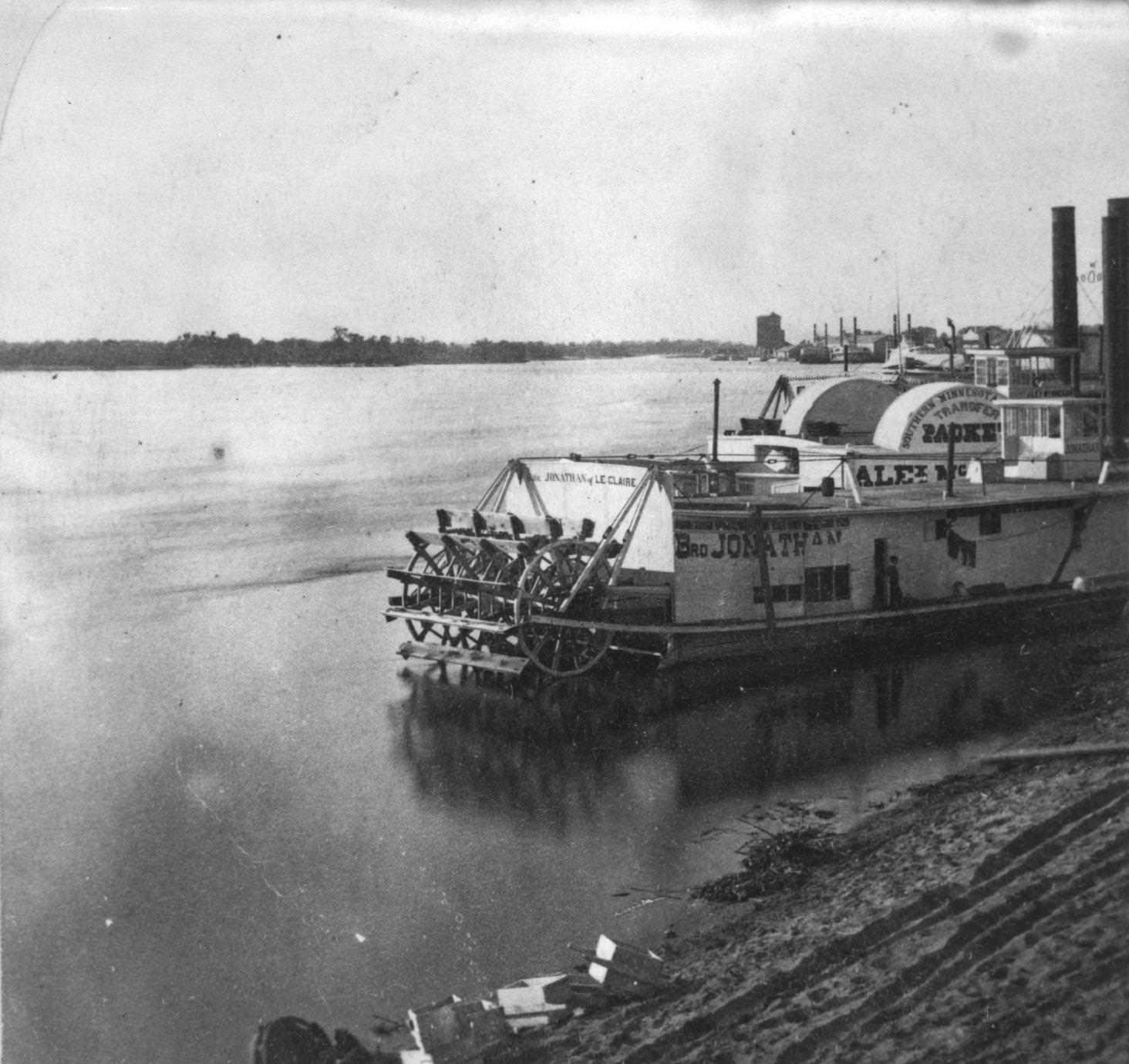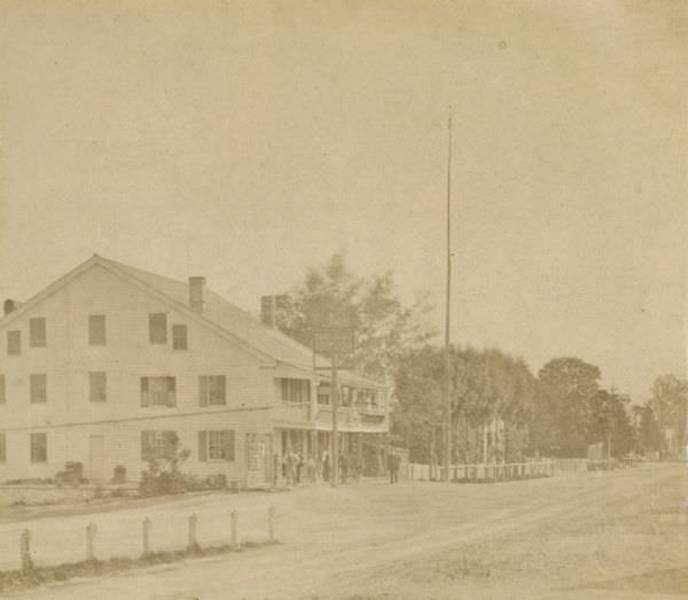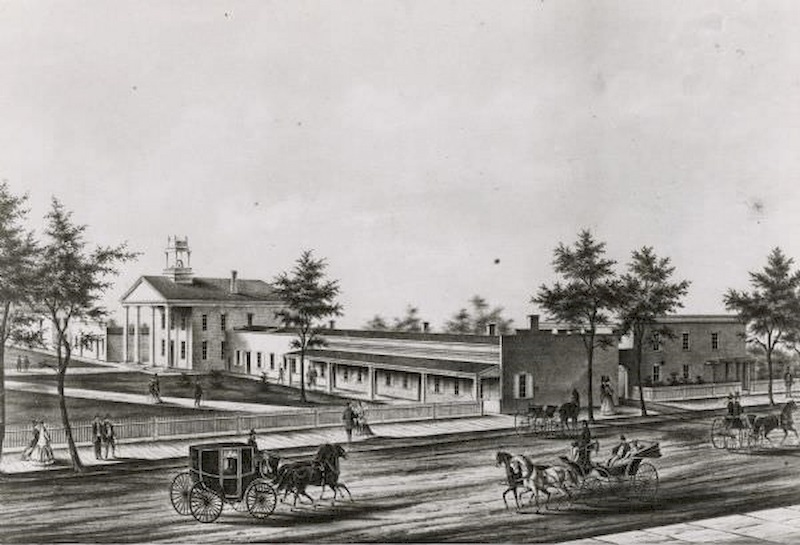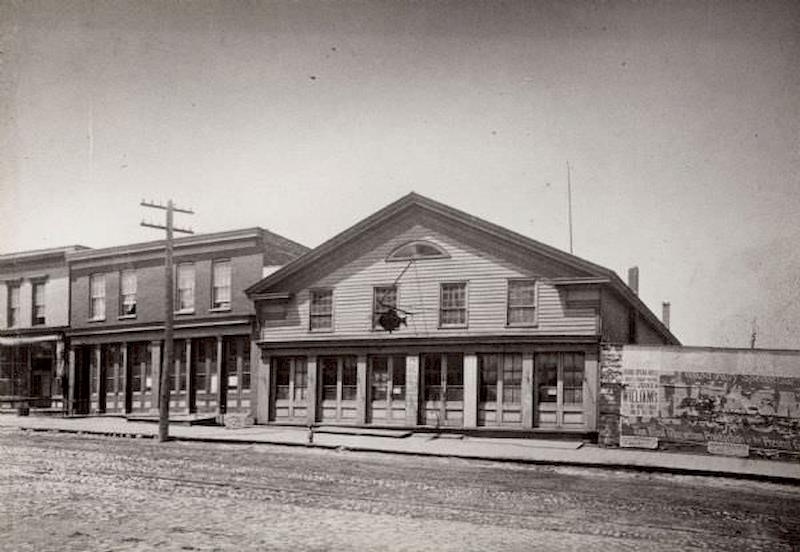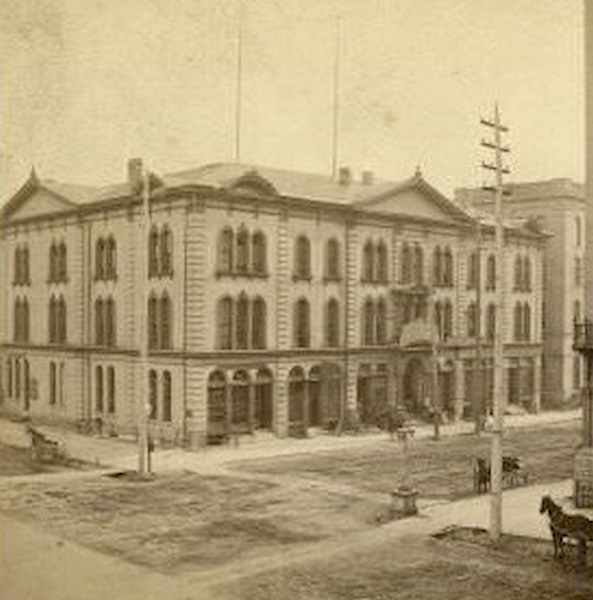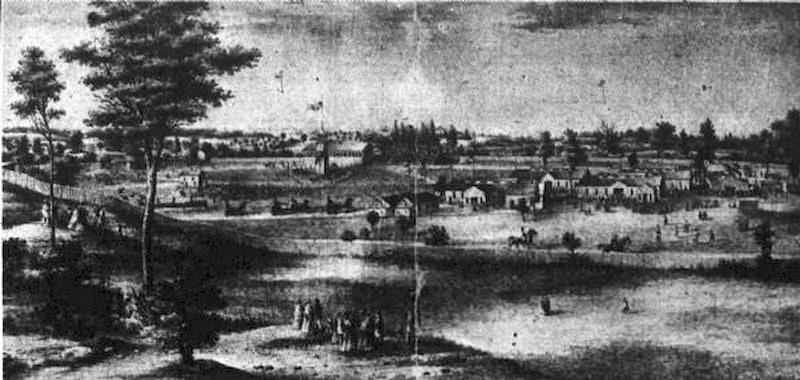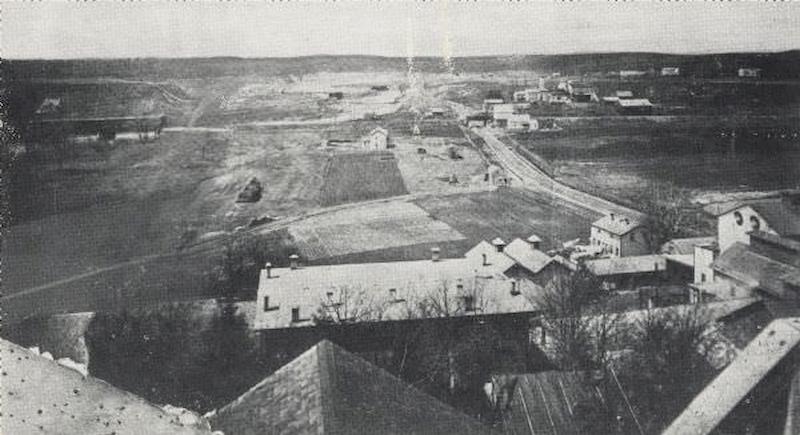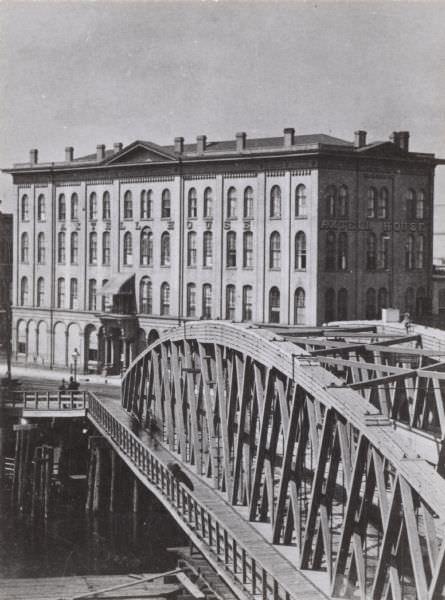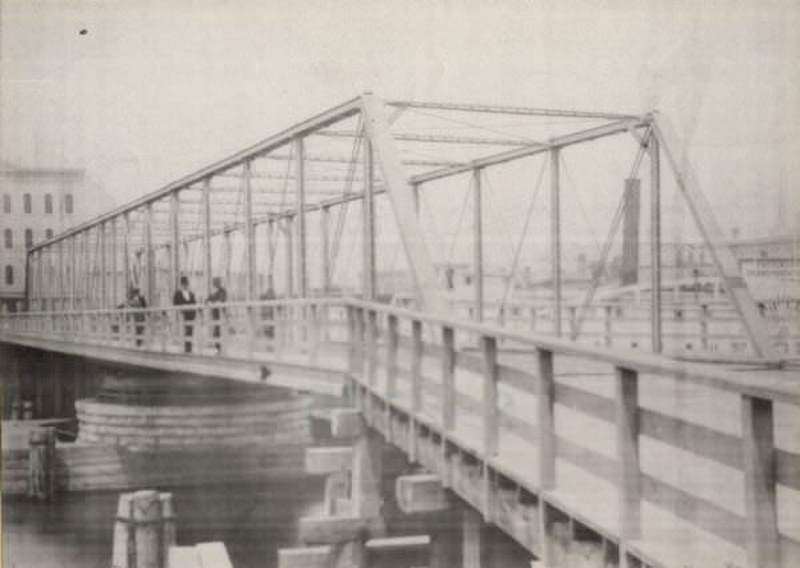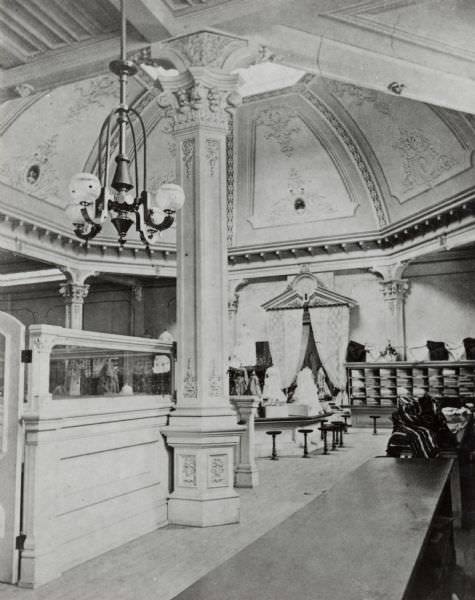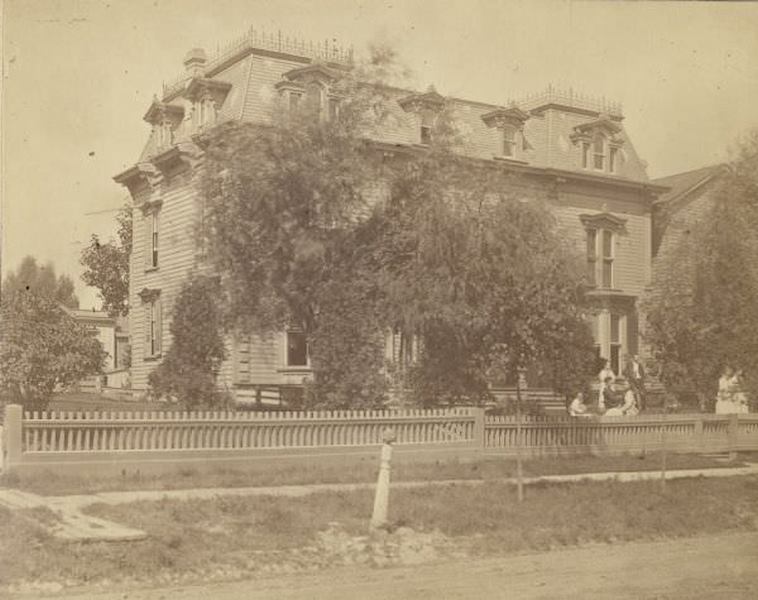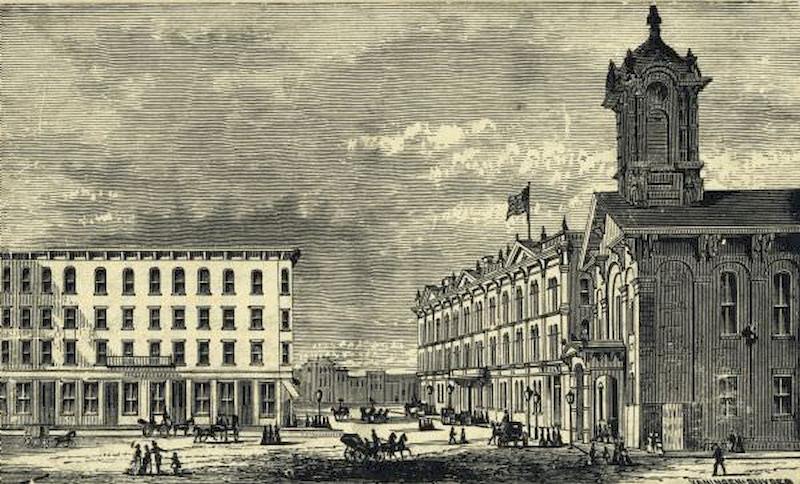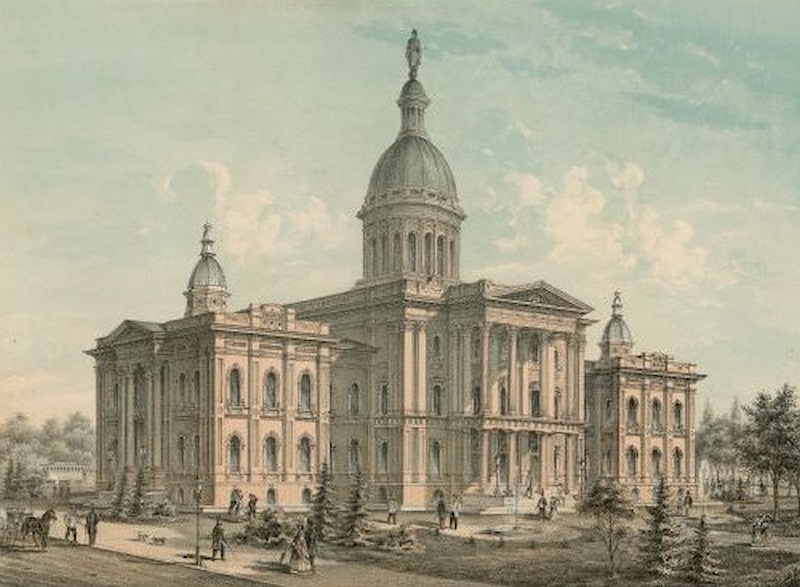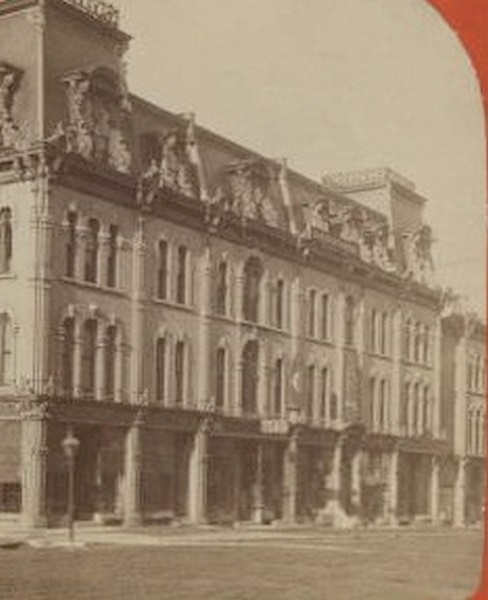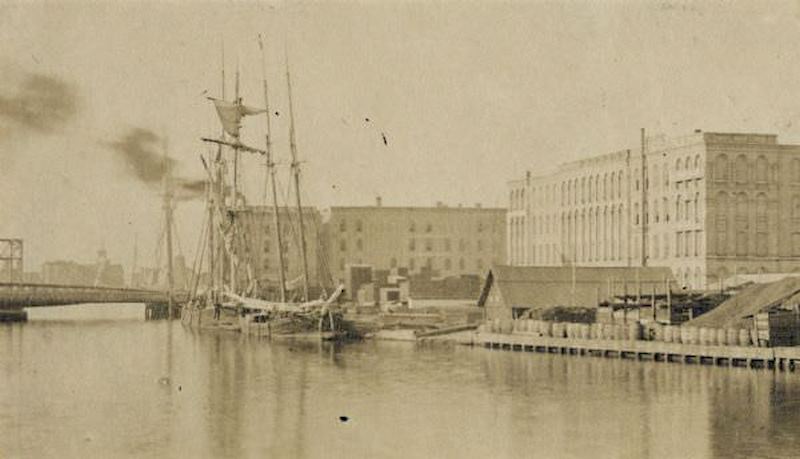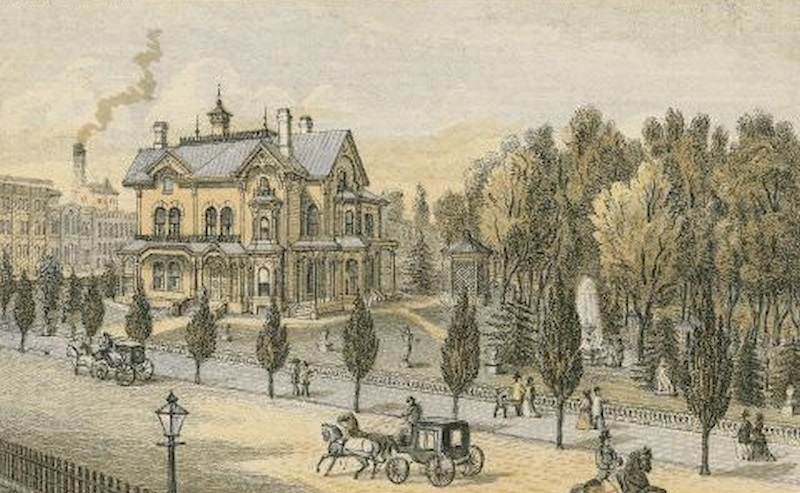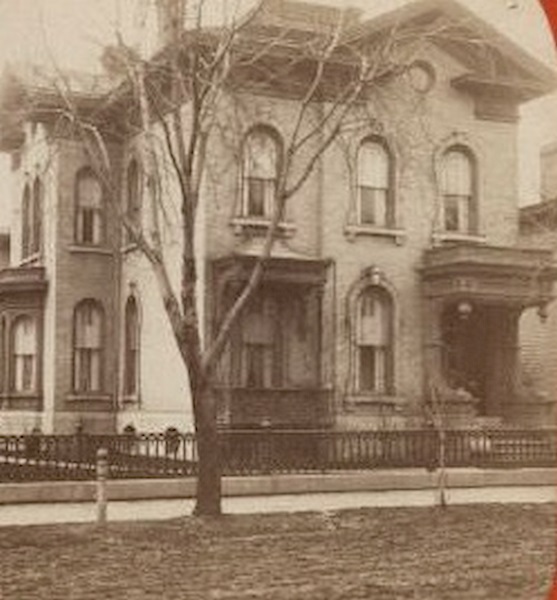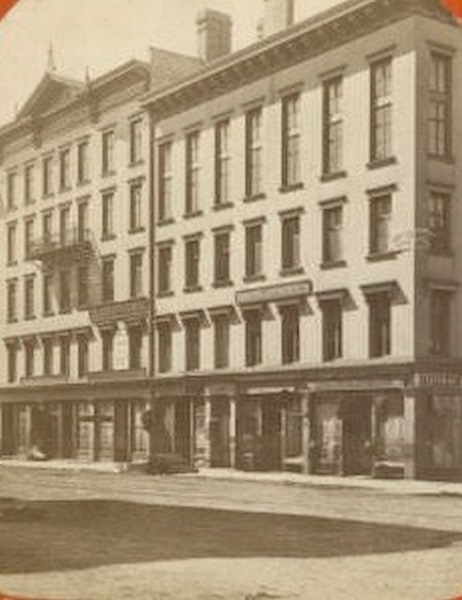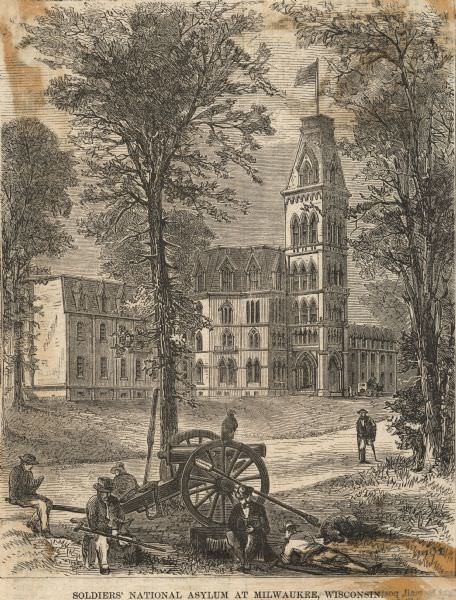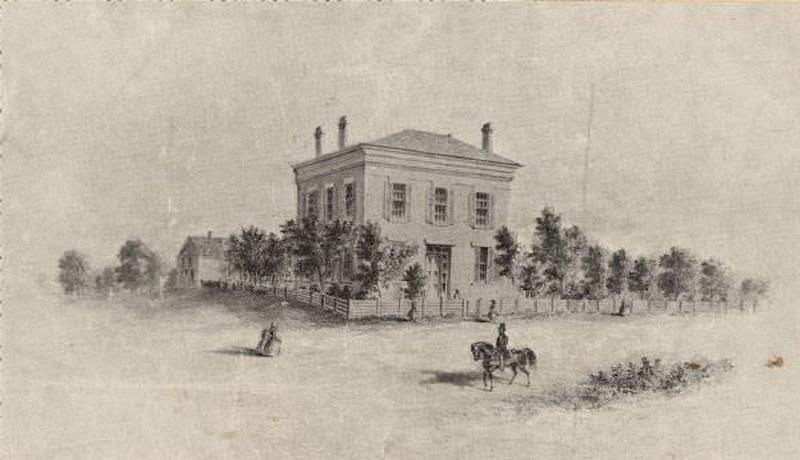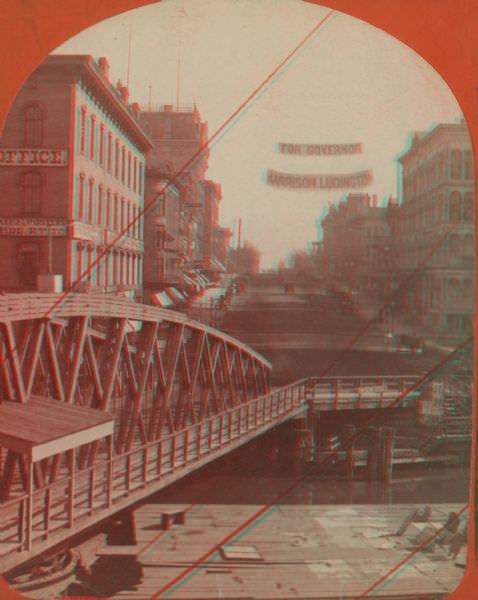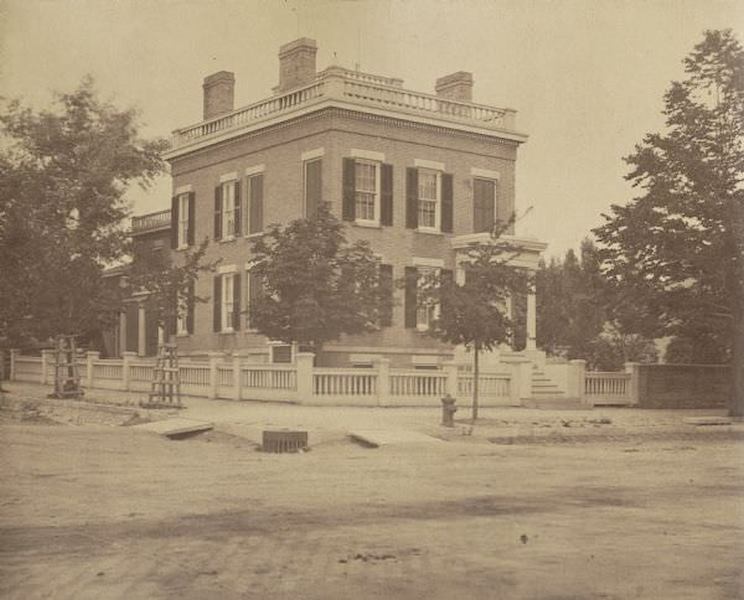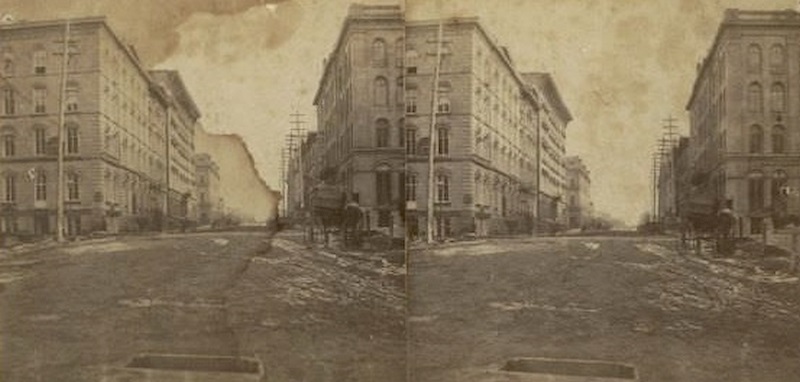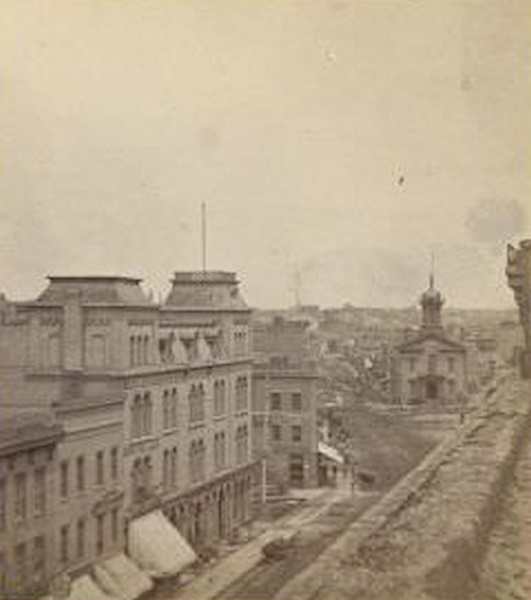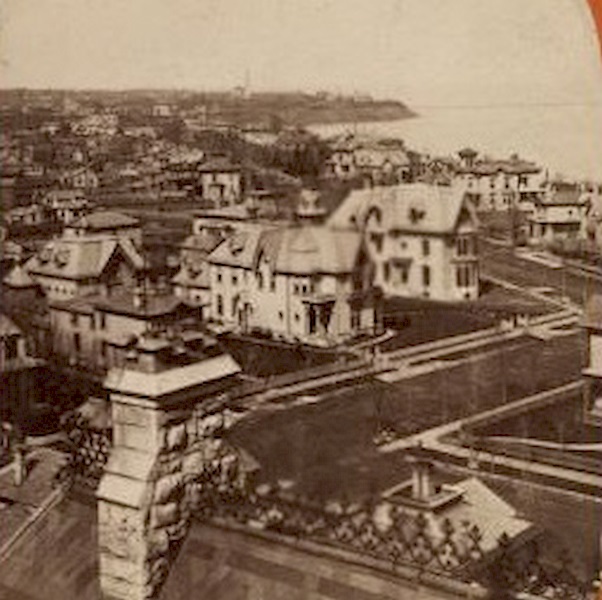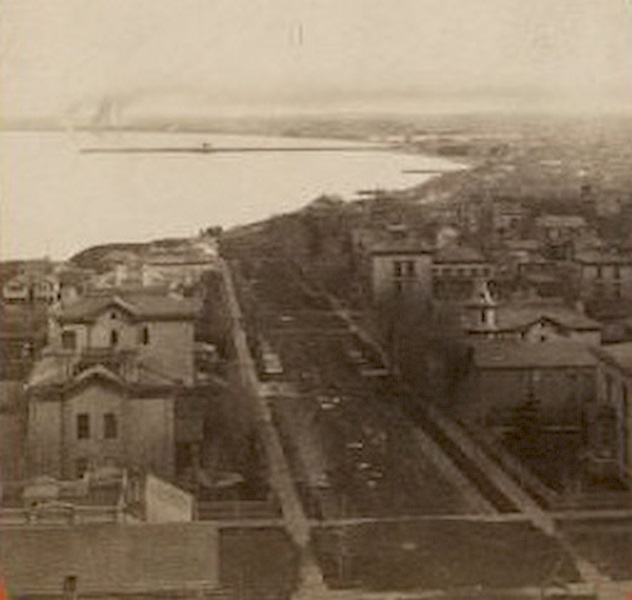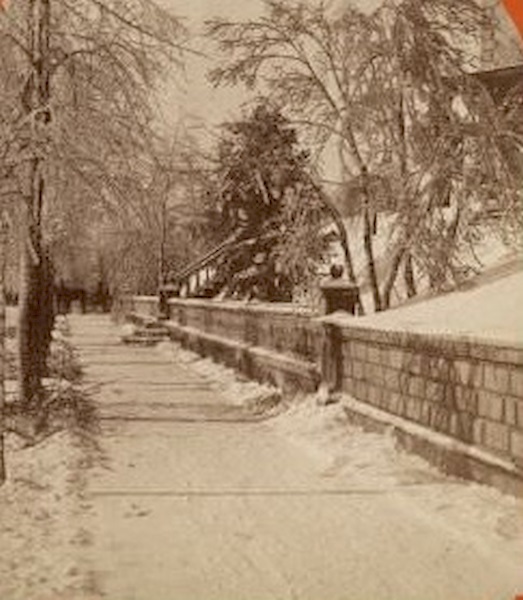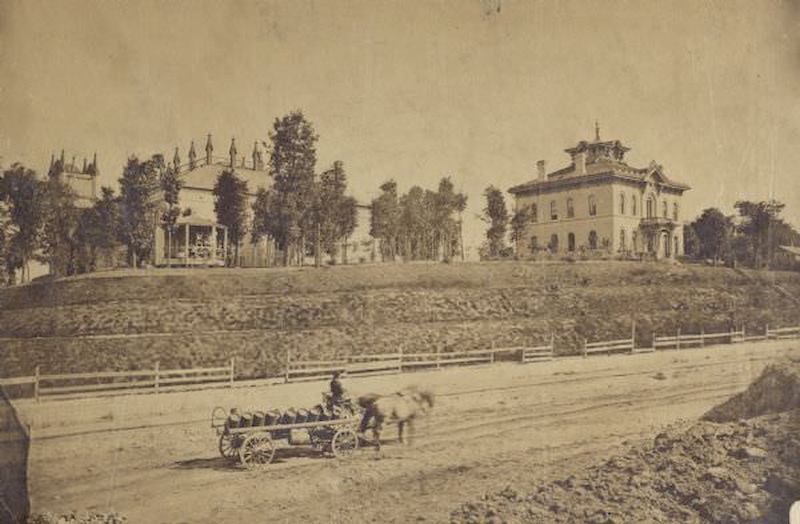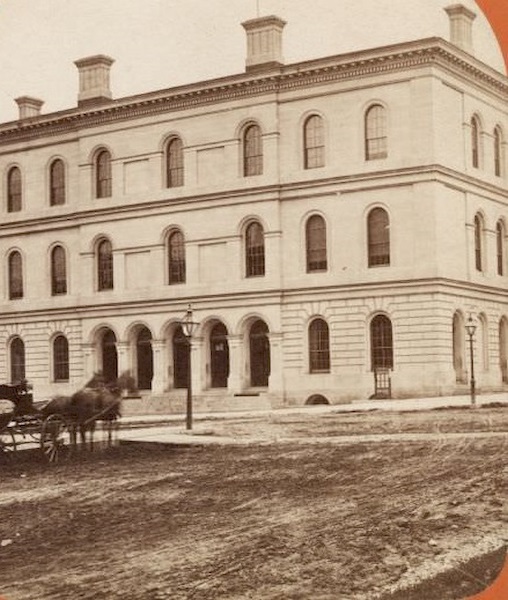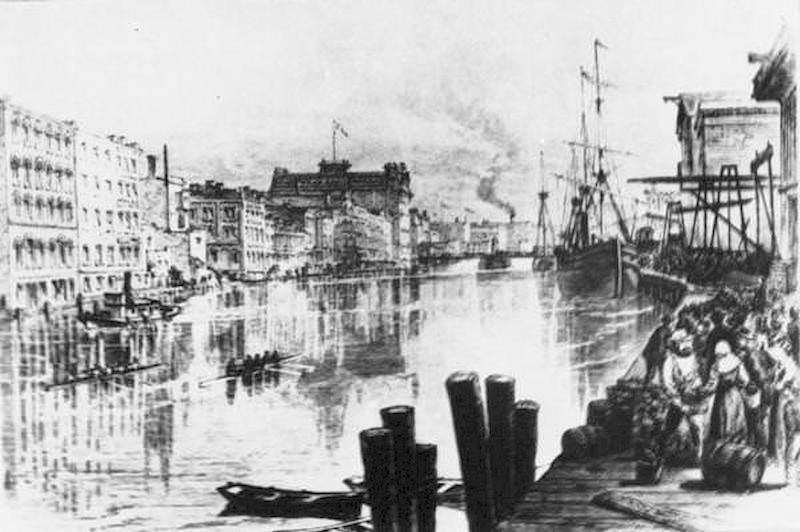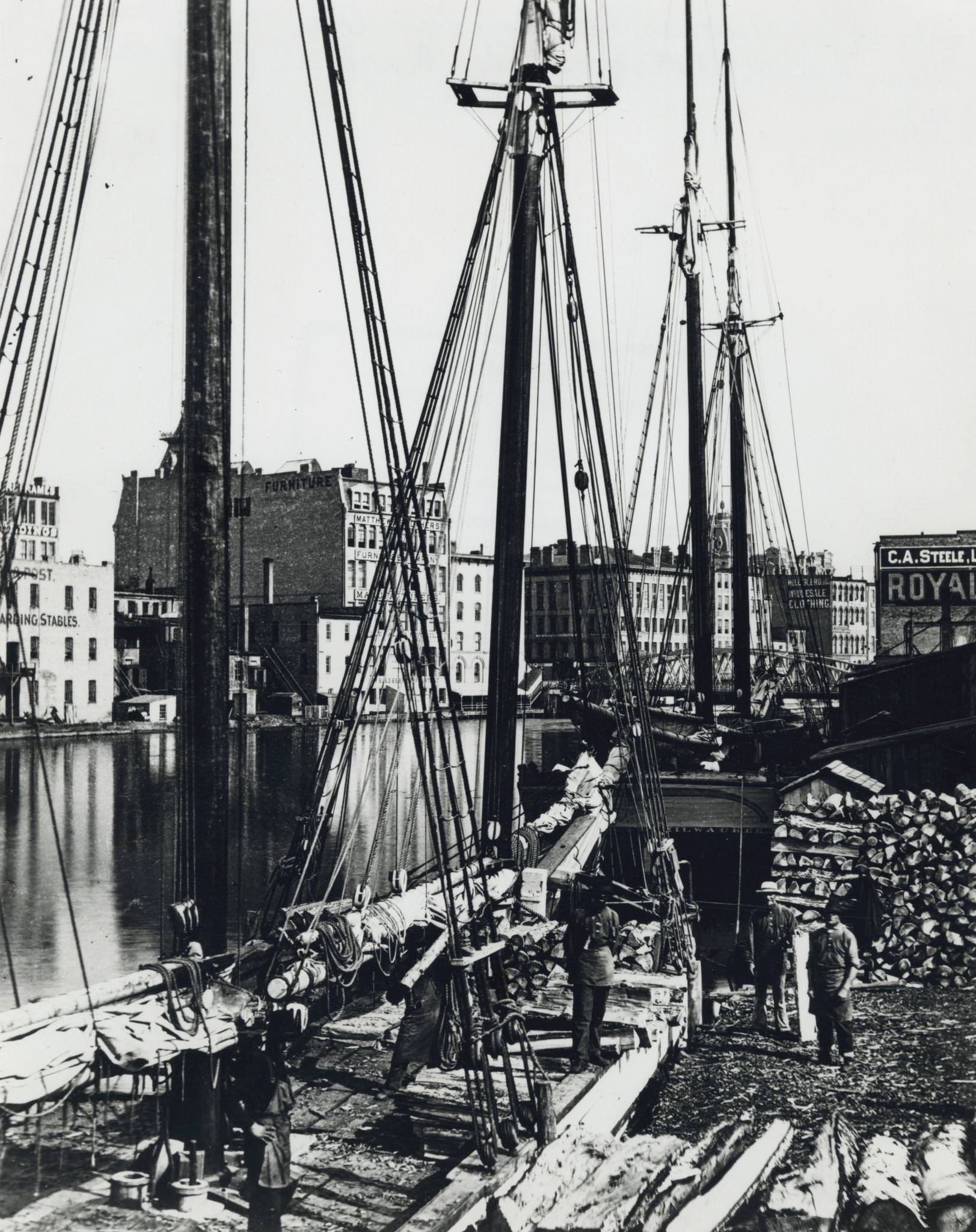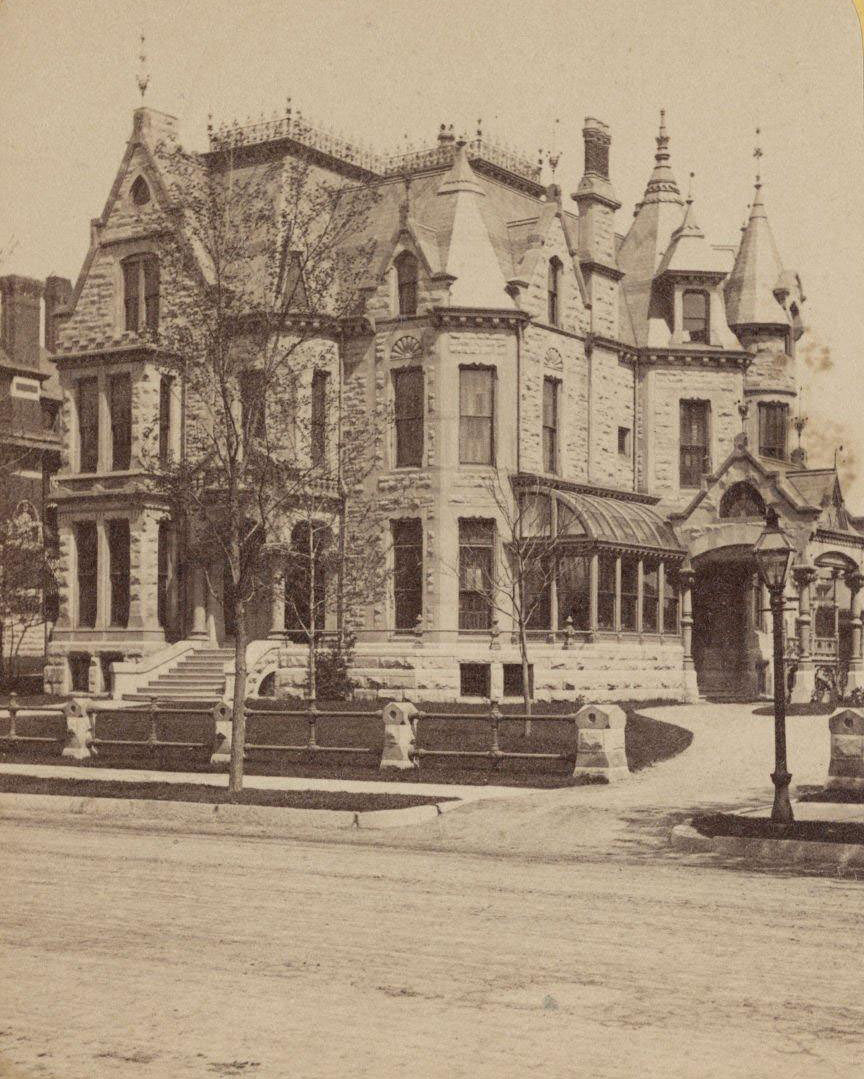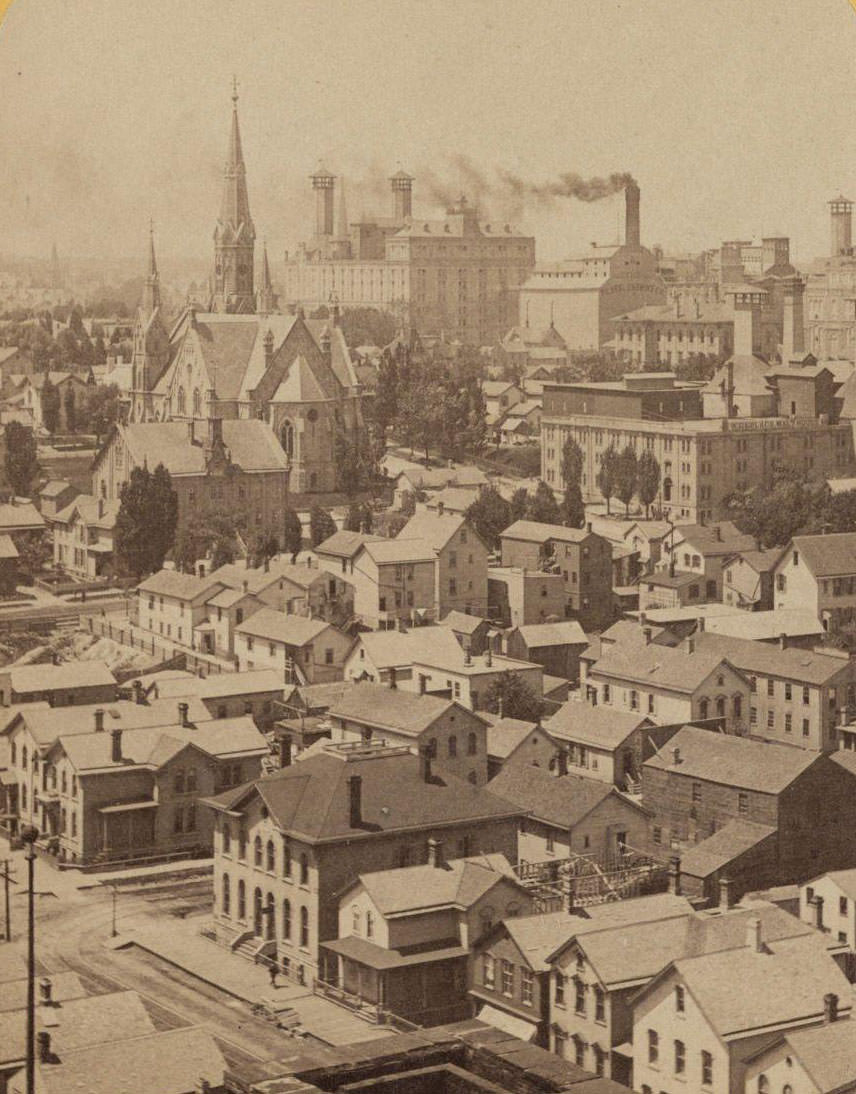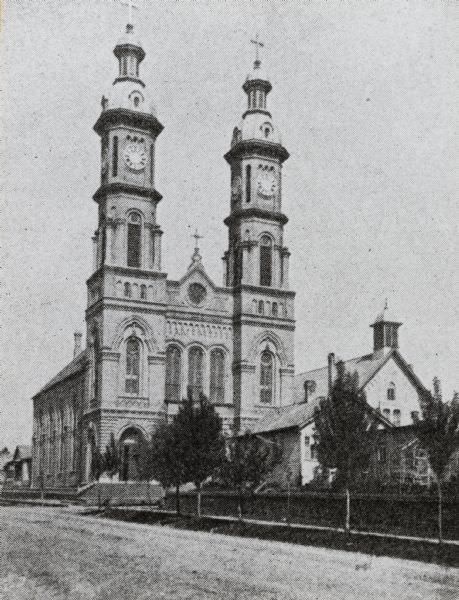Milwaukee began to lose its wheat trade market to Minneapolis and St. Paul, Minnesota, during the 1870s. The grain passing through the Port of Milwaukee had greatly declined by 1880. Milwaukee’s economy is based on manufacturing steel and iron, which remains a major industry. The city has benefited from the growth of manufacturing in recent decades.
The city’s steel industry was largely fueled by iron-ore deposits discovered nearby Dodge County in the 1840s. The largest steel mill in Wisconsin was opened in 1868. The mill employed over 1,000 workers and produced railroad rails. There was a tremendous amount of construction of iron foundries and manufacturing facilities
#1 St. Stanislaus Polish Catholic Church. Milwaukee, Wisconsin, 1875
#2 Two men are standing on the platform outside of Kiel’s first Depot, 1870
#3 Built by Charles Durkee in 1843 and burned January 31, 1871.
#4 Wisconsin Avenue in Milwaukee, 1870
#5 The Milwaukee & St. Paul Railway Company grain elevator at the Milwaukee harbor, with a sailing ship anchored nearby, 1870
#6 Elevated view of Milwaukee River with large sailing ship – a two-masted schooner – entering the port, 1870
#7 Water tower of the Milwaukee water works, North Point, 1870
#8 View of bluffs and buildings on the shore of Lake Michigan, Milwaukee, Wisconsin, 1877.
#9 High angle view of a ship moored at a wharf on the Milwaukee River in Milwaukee, Wisconsin, 1875.
#10 Bardee Hospital, 1870
#11 Alex Mitchell, 1870
#12 Main Street – north end – Old Main Street bridge, 1875
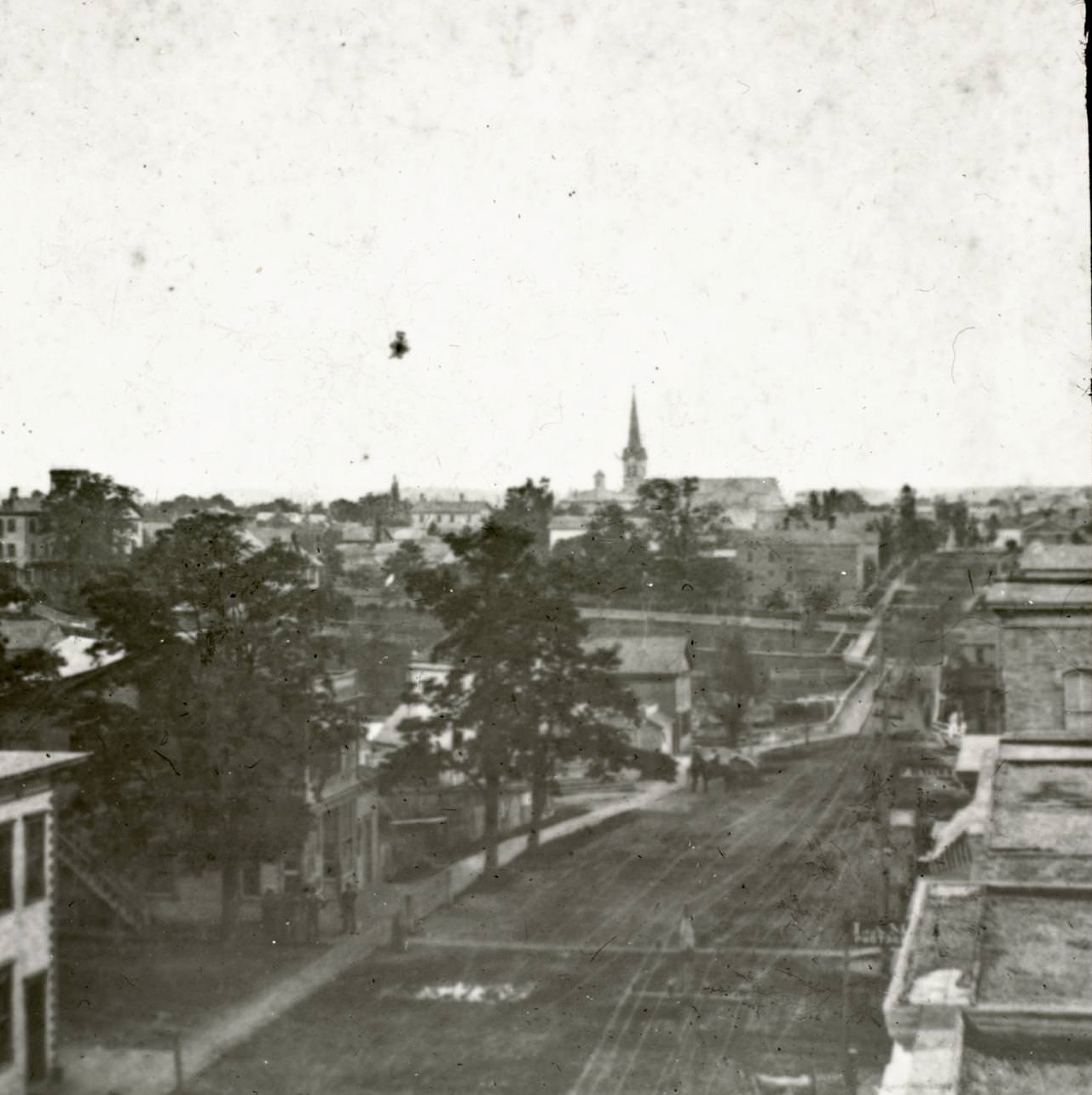
This photograph was taken from a high point on the Bain Wagon Company property facing north up Main Street, showing the bend in the street to the left to meet Milwaukee Avenue. The lawn of the Pennoyer Water Cure can be seen on the left, just at the north end of Main Street bridge. The church spire is that of St. George's Catholic Church.


